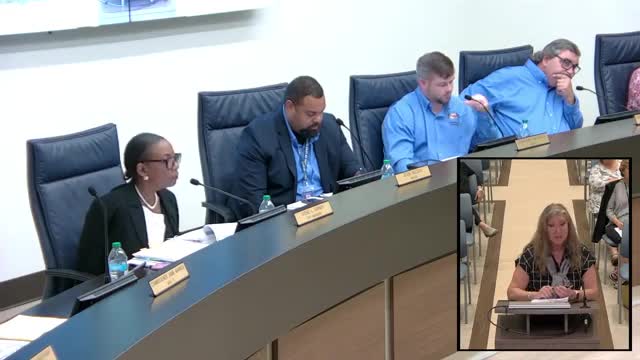City faces budget crisis amid disaster recovery challenges
September 11, 2024 | Lynn Haven, Bay County, Florida
This article was created by AI summarizing key points discussed. AI makes mistakes, so for full details and context, please refer to the video of the full meeting. Please report any errors so we can fix them. Report an error »

In a recent government meeting, city officials discussed the complexities of the budget, particularly in light of ongoing disaster recovery efforts and infrastructure projects. The meeting highlighted the challenges of balancing the budget while addressing significant financial obligations stemming from a $31 million disaster bond taken out after a hurricane.
City officials reported that over the past six years, approximately $100 million has been spent on recovery projects, with an equal amount received from insurance and FEMA reimbursements. Currently, the city has about $1.6 million in the bank and $6.3 million receivable, leaving a projected $3 million in the disaster fund after accounting for annual debt service costs of $2.7 million. Officials anticipate that by fiscal year 2027, the general fund will need to cover the disaster bond's debt service, estimated at $18 million.
The discussion also touched on the impact of grant funding on the millage rate, suggesting that increased grant revenue could allow for a reduction in the millage rate, thereby easing the financial burden on residents. However, concerns were raised about the tight budget, with a proposed 4% cost-of-living adjustment (COLA) that some officials felt did not adequately reflect inflation.
Infrastructure projects, particularly in the sewer department, faced significant budget cuts, with a 36% reduction noted. Officials explained that while rates for water and sewer services had increased, the budget constraints meant that essential projects were being postponed rather than funded.
The meeting also addressed the long-promised library project, with a budget of $1.9 million that has yet to be allocated. Officials acknowledged the need for recreational facilities, including sports fields, to keep pace with community needs, particularly as interest in sports like lacrosse grows.
Overall, the meeting underscored the city's ongoing struggle to manage debt while fulfilling community commitments, with officials emphasizing the importance of strategic financial planning to ensure future projects can be realized without overburdening taxpayers.
City officials reported that over the past six years, approximately $100 million has been spent on recovery projects, with an equal amount received from insurance and FEMA reimbursements. Currently, the city has about $1.6 million in the bank and $6.3 million receivable, leaving a projected $3 million in the disaster fund after accounting for annual debt service costs of $2.7 million. Officials anticipate that by fiscal year 2027, the general fund will need to cover the disaster bond's debt service, estimated at $18 million.
The discussion also touched on the impact of grant funding on the millage rate, suggesting that increased grant revenue could allow for a reduction in the millage rate, thereby easing the financial burden on residents. However, concerns were raised about the tight budget, with a proposed 4% cost-of-living adjustment (COLA) that some officials felt did not adequately reflect inflation.
Infrastructure projects, particularly in the sewer department, faced significant budget cuts, with a 36% reduction noted. Officials explained that while rates for water and sewer services had increased, the budget constraints meant that essential projects were being postponed rather than funded.
The meeting also addressed the long-promised library project, with a budget of $1.9 million that has yet to be allocated. Officials acknowledged the need for recreational facilities, including sports fields, to keep pace with community needs, particularly as interest in sports like lacrosse grows.
Overall, the meeting underscored the city's ongoing struggle to manage debt while fulfilling community commitments, with officials emphasizing the importance of strategic financial planning to ensure future projects can be realized without overburdening taxpayers.
View full meeting
This article is based on a recent meeting—watch the full video and explore the complete transcript for deeper insights into the discussion.
View full meeting